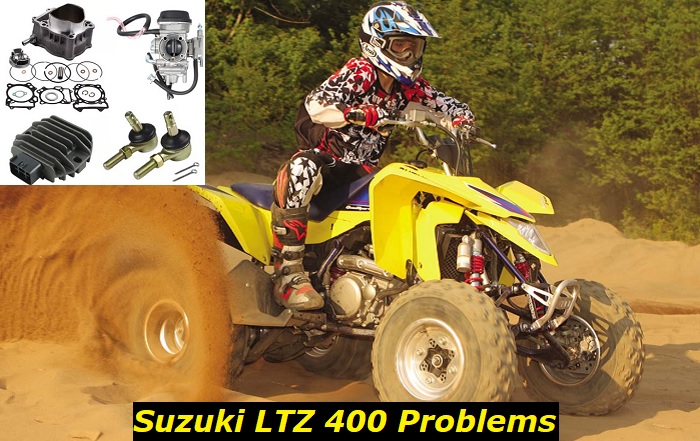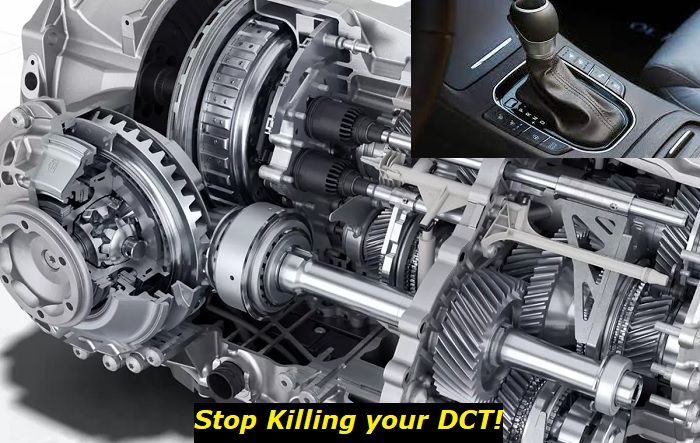The Suzuki LTZ 400 is built for racing. Therefore, its design is focused more on performance, versatility, and durability on and off track. Due to the careful balance of the said elements, the ATV was an instant hit when it came out. However, it is not without its share of problems over the years.
So, in this article, we will investigate the worst issues experienced by Suzuki LTZ 400 owners based on reports, customer complaints, and user forums.

Worst Problems Encountered by Suzuki LTZ 400 Owners and How to Fix Them
Since we are talking about the worst issues here, we highly recommend taking your ATV to a mechanic or a Suzuki service center for diagnosis and repair should you end up encountering any of them.
Do not attempt to do the following repairs unless you are confident in your ability to do so. Incorrect diagnosis and fixes can cause further damage to your ATV and may void your warranty. So, proceed at your own risk or just take the information provided here for its educational value.
With these things out of the way, here are the worst problems that you may face with your Suzuki LTZ 400 plus every possible way to address each:
1. Fuel Injector Malfunction
Fuel injector issues can lead to rough rides, high fuel consumption, significant power loss, and even stalling. If your Suzuki LTZ 400 ATV is having these problems, there are a few things you can do to try and fix the problem yourself.
Start by checking the fuel injector for any damage or leaks. If you find any defects, replace the fuel injector with a new one.
To replace your ATV's fuel injector, you'll need to purchase a new fuel injector first. Make sure to get one that is compatible with your Suzuki LTZ 400. You can find this information in your owner's manual or Suzuki's customer service.
Once you have the new fuel injector, you'll need to remove the old one. To do this, disconnect the negative battery terminal. This will prevent any electrical shorts from occurring.
Next, locate the fuel injector on the engine. It is usually near the throttle body. Once you have found it, use a socket wrench to remove the bolts that hold it in place.
Carefully pull the old fuel injector out of the engine. Take note of how it is positioned so that you can install the new one in the same way. Don't forget to bleed the fuel system before proceeding further to eliminate any air pockets that may have formed in order to guarantee the smooth and efficient performance of your engine.
Now, it's time to install the new fuel injector. Begin by connecting the electrical connector to the new injector. Then, bolt the new injector in place.
Finally, reconnect the negative battery terminal and start the engine. Allow it to run for a few minutes so that the new injector can prime itself.
If your fuel injector is still of good quality upon inspection, maybe there are just pieces of dirt or debris blocking its proper function. Simply clean it with a soft rag to remove the contaminants.
For a more thorough cleaning process, remove the fuel injector from the ATV and soak it in a solution of warm water and vinegar for 30 minutes. After soaking, use a brush to scrub any remaining debris from the injector. Finish by rinsing the injector with clean water and reinstalling it in the ATV once dry.
You should also check the electrical connection of the fuel injector. Make sure the linking is tight and free of any corrosion.
2. Bad Valve Adjustment
If your Suzuki LTZ 400 ATV is idling rough or stalls frequently, it may be time for a valve adjustment. But before you begin, it is important to understand how the valve system works.
The valves are opened and closed by the camshaft, which is driven by the crankshaft. As the crankshaft turns, the camshaft turns and pushes on the valves, opening them. The valves are kept closed by springs.
When the valve is open, the air/fuel mixture is drawn into the cylinder. When the valve is closed, the mixture is compressed and then ignited by the spark plug.
The valve clearance is the distance between the top of the valve and the bottom of the rocker arm when the valve is closed. This clearance is necessary so that the valve can open and close properly.
Over time, the clearance may change due to wear on the parts. If the clearance is too small, the valve will not open far enough and the engine will run poorly. If the clearance is too large, the valve will bounce and the engine will also run poorly.
To adjust the valves, you will need a feeler gauge, a wrench, and a screwdriver. Start by removing the spark plug from the cylinder you will be working on. This will make it easier to turn the engine over by hand. While you're at it, check the quality of the spark plug if it's already in need of replacement.
Find the valve you need to adjust. On the Suzuki LTZ 400, there are two exhaust valves and two intake valves.
Insert the feeler gauge between the valve and the rocker arm. Then, adjust the valve so that there's 0.004 inches of clearance between the valve and the rocker arm. Next, tighten the locknut with the wrench. Repeat the previous steps for the other valves.
Reinstall or replace the spark plug and start the engine. Let it idle for a few minutes to make sure the adjustment was correct. If you find that one of the valves is still not opening far enough, you may need to replace the valve or the rocker arm.
3. Faulty Valve and Rocker Arm
If your Suzuki LTZ 400 ATV is starting to make strange noises, it might be time to check the valves and rocker arms. If any of these parts are worn or damaged, they can cause major performance problems. So, if you think your ATV might need a new valve or rocker arm, follow the steps here and you'll have it running well in no time.
The first step is to remove the valve cover. This will give access to the valves and rocker arms. Disconnect the negative battery terminal to prevent any electrical accidents.
Unscrew the four bolts that hold the valve cover in place. These are usually located around the perimeter of the cover. Carefully lift off the valve cover and set it aside.
Take a look at the gasket that seals the valve cover to the engine. If it's damaged, you'll need to replace it before putting the cover back on. Clean up any debris or oil that might be on the engine surface where the valve cover sits. This will help ensure a good seal when you put the cover back on.
When the valve cover is already off, replace the valves and rocker arms. Start by removing the old valves. There are two types of valves: intake and exhaust. You'll need to remove both types.
To remove the intake valves, first take out the spark plugs. This will relieve any pressure that might have built up in the cylinders.
Next, use a wrench to unscrew the valve cover bolts. Remove the valves one at a time. Be careful not to lose the springs or other small parts. Clean up the valves and the valve seats with a brush or other cleaning tool.
Now, it's time to install the new valves. Begin with the intake valves. Put a small amount of lubricant on the valve stems to help them slide into place easier. Use the wrench to screw the valve cover bolts back in. Repeat these steps for the exhaust valves.
After that, move on to the rocker arms located just under the valves. Remove the old rocker arms by unscrewing the bolts that hold them in place. Clean up the rocker arm shafts and install the new rocker arms. Screw the bolts back in to secure them.
Once the new valves and rocker arms are in place, it's time to put everything back together. Proceed by putting the valve cover back on. Make sure the gasket is in good condition and that the cover is clean before putting it back in place. Screw the valve cover bolts back in and reconnect the negative battery terminal.
Lastly, start the engine and listen for any strange noises. If everything sounds normal, you're all done!
4. Bad Air Filter Design
This is more of a design flaw on the part of Suzuki. Thus, if this is causing you inconvenience, better have the air filter replaced.
To change your air filter, begin by parking your Suzuki LTZ 400 on a level surface and setting the parking brake. Locate the air filter box on the left side of the ATV just behind the front left tire. The air filter box has a black plastic cover with four screws holding it in place.
Unscrew the four screws holding the air filter box cover in place with a Phillips head screwdriver. Remove the cover and set it aside. Likewise, remove the air filter from the air filter box.
Inspect the air filter for dirt and debris. If the air filter is dirty, replace it with a new one. Insert the new air filter into the air filter box and replace the cover. Screw the four screws back in place to secure the cover.
Finally, lower the Suzuki LTZ 400 from its jack and test drive it to ensure that the air filter is working well.
Conclusion
We hope that the information offered here will give you an idea of the worst problems that you could ever encounter in the Suzuki LTZ 400. There may be other problems not included here as the discussion only centered on the worst of the worst of the ATV's problems, but those will be reserved for future discussions.
Until then, enjoy your ride!
About the authors
The CarAraC research team is composed of seasoned auto mechanics and automotive industry professionals, including individuals with advanced degrees and certifications in their field. Our team members boast prestigious credentials, reflecting their extensive knowledge and skills. These qualifications include: IMI: Institute of the Motor Industry, ASE-Certified Master Automobile Technicians; Coventry University, Graduate of MA in Automotive Journalism; Politecnico di Torino, Italy, MS Automotive Engineering; Ss. Cyril and Methodius University in Skopje, Mechanical University in Skopje; TOC Automotive College; DHA Suffa University, Department of Mechanical Engineering






Add comment